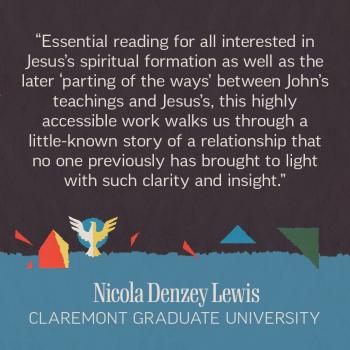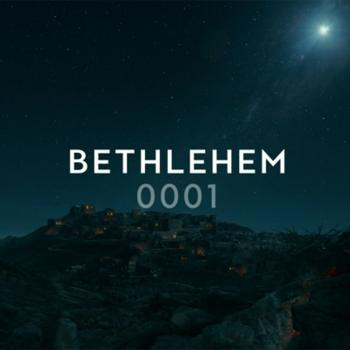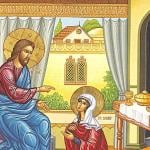I am grateful to Eerdmans for sending me a complimentary review copy of Gregory Mobley’s book The Return of the Chaos Monsters: and Other Backstories of the Bible
.
Since the book has an overarching focus on stories I thought it might be appropriate to begin this review with a story, a personal anecdote. It is a testimony to the book’s intriguing approach and delightful prose that, having taken the book along with me to read on a church trip to King’s Island amusement park, I found myself talking with another church member and parent about what I was reading, even though I was at that point just starting the book. It grabs you from the outset, and leads to conversations – and in this case, on the basis of the little I had read and shared with my friend, to him purchasing a copy of the Kindle edition there on the spot!
The book has chapters devoted to the major sections or genres of the Hebrew Bible, and can serve as an excellent introduction to those different types of literature, giving an overview of literary forms in a more creative manner than many other introductions I’ve read which attempt to do likewise.
The author begins the book with a set of seven stories, and the statement that “This book is about the stories in the Bible and the stories behind the Bible and how the Bible is essentially, relentlessly story” (p.1). The author is passionate about stories and storytelling, and his delightful way of expressing things reflects this. Human storytelling is related to the backstory to creation, the ordering of chaos, and our human attempts to make sense of our lives. He describes the Bible as one body of literature that is like Noah’s ark, into which he colorfully envisages the stories of pre-literate humanity making their way two by two (p.2). His prose is delightfully creative and colorful, especially in the early chapters, and while some of his images are strikingly clear from the outset, others are more like enigmatic, evocative riddles, such as when he writes that the Bible’s “parallels to the literature of other cultures are not Jungian; they are Dickensian” (p.3). Mobley notes the Biblical literature’s “narrative alchemy” which tended to turn everything into story, so that even literature that was not originally, such as Lamentations, was connected with known figures and stories, transforming its poetry into part of the story in the process (p.4). Echoing Krister Stendahl, Mobley suggests that readers of the Bible have sometimes parsed every word and sentence in search of deeper meanings that may not be there, and in the process have obscured the clarity and simplicity of the narratives themselves (pp.7-8).
One reason for thinking in terms of “backstory” is that every piece of literature in the Bible is composed in a genre and thus represents a variation on a theme or standard plot type that already existed. When we watch a romantic comedy or read a mystery novel, we have expectations shaped by prior knowledge of the genres. And yet since many are presented the Bible’s stories before they learn of the wider literary context that frames them, such information can indeed appear on the scene as background, as prelude, as “backstory.” What’s more, even the story that claims to take us back to “in the beginning” is picking up at an arbitrary point, but it is always possible with stories to back up and tell a story that is set prior to the first one. Mobley nicely uses Tolkien’s novels and Star Wars as examples (p.9).
This is not the only point at which reference is made by way of analogy to sci-fi and fantasy. The X-Men and Teenage Mutant Ninja Turtles are mentioned early in chapter one, about the backstory of creation, to provide an analogy to the Eleven, Team Tiamat in the Enuma Elish (p. 18). Other of today’s familiar genres are likewise mentioned, sometimes to illustrate the character of the Bible’s stories, and sometimes to illustrate the fact that we are still telling stories of a similar sort today. A great example is when, to illustrate the idea at work in Biblical literature that sin risks unleashing chaos, which has been subdued but not eliminated, Mobley makes reference to more recent works as different as Psycho and The Cat in the Hat (p.22).
Chapter two focuses on Torah, which is seen through the lens of human beings understood to partner with God in managing chaos. Chapter three turns to the former prophets with their sense of poetic justice – rather like the working of karma, people are said to meet ends which are appropriate to their own crimes. Here too there are some gems of expression, such as when Mobley imagines that “the Jerusalem Chamber of Commerce lobbied hard and successfully to spin most of the Biblical story its way” (p.48). This chapter also provides many examples of inner-Biblical intertextuality, as stories resonate among one another across the span of the Deuteronomistic History.
Chapter 4 focuses on prophetic literature, and begins by emphasizing that the prophets were oral poets, and thus what we have in this corpus is based on and a record of performances, rather than sermons that were typed up before being read to a congregation. A major focal point in the chapter is the notion of divine anger, which Mobley emphasizes “is a projection of emotional qualities onto the blank screen of Ultimate Reality” (p.73), but nevertheless remains a presupposition of this literature that must be in view for it to make sense. Indeed, the prophet is largely understood in terms of two roles, namely that of proclaiming God’s anger to the people, and that of interceding to seek to turn God’s wrath away from the people. And, as Mobley writes only slightly later, whatever we may think about their truth value, “This type of storytelling and these types of personalizing characterizations about Ultimate Reality – that God loves and hates, remembers and forgets, hardens and softens, caresses and strikes – have a kind of energy, the power to inspire courage, tenderness, justice, and hope, that cosmological and philosophical abstractions cannot match” (p.75).
Chapter 5 looks at the Psalms, which seem to not only critique in places, but also reflect in many places, the idea that God depends on us for sacrifice and praise. Chapter 6 turns to Wisdom literature. Here too Mobley’s penchant for striking and helpful analogies does not waver, as for instance when he compares the “you get what you deserve” theology of other literature as Newtonian in character, and then suggests that in the Book of Job a glimpse is given behind the quantum curtain to see that chaos is still present (p.124). Chapter 7 looks at apocalyptic under the heading of “conspiracy theory,” suggesting that all subsequent conspiracy theories are variations on this prototypical apocalyptic one, in which things that are wrong with the world are blamed on malevolent forces that are at work behind the scenes. Once again Mobley waxes eloquent as he comments on the plot, cast of characters, staging, and other aspects of this type of literature (p.133).
In the final concluding section, entitled “Windows,” Mobley ties some threads together, and at the very end, asks about faith and living within the framework of these stories. Mobley also provides in passing a useful example that is worth considering in relation to the topic of mythicism. He notes the parallels that one could draw, from a purely literary perspective, between Paul’s escape from Damascus by being let down from a window, and the earlier stories of Israelite spies escaping Jericho with Rahab’s help and David escaping Saul with Michal’s help, both times through windows. If it were not for the fact that Paul in 2 Corinthians 11:33 mentions this story and Acts seems to confirm it independently, one might well have assumed that it was a mere literary concoction based on earlier stories. And so this instance, even though Mobley does not highlight it, provides a warning that one simply cannot determine historical authenticity on the basis of whether or not it is possible to see in a story echoes of a different earlier one.
The author writes as a Christian, and so the fact that he writes of “the Bible” when his focus is largely (although by no means entirely) on the Jewish Bible, which is a subset of the Christian Bible, might seem puzzling to some readers. But on the whole, Mobley’s book is not merely clear but engaging, striking, evocative, provocative, and a thoroughly enjoyable read. It takes the reader through the ups and downs that are the contours of the Scripture of Judaism and Christianity, and the ride is genuinely thrilling. I recommend this book for anyone interested in getting familiar with the Bible’s literary genres or approaching the Bible as literature, and even those well-seasoned in these fields with find it a rewarding read.













